Assignment 04: MATERIAL SELECTION AND DFM
Problem Statement
Use Material selection software to select material for following three cases:
1. Body of electric switch/plug
2. A coffee mug
3. Cover of a mobile phone.
Please upload your report as a single pdf file giving material properties used and material(s) arrived. Please also suggest manufacturing process(es) if 500000 units of above component has to be produced.
Software Used
CES EduPack 2005
Selection of material and DFM for Body of Electric Switch/Plug
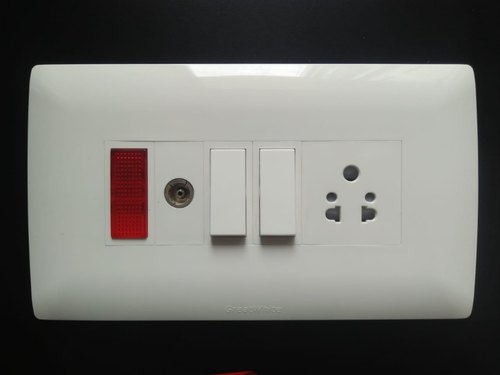
First property which comes into mind while choosing material for electric switch is the resistivity of the material. The material for such applications should be an insulator i.e. the electrical conductivity should be low or it can be said that the electrical resistivity should be high.
Initially in the CES software we had 2882 materials (once we select Material Universe). After that 'Selection Crteria' was chosen and 'Graph stage' was selected. In the 'Attribute' section for x-axis, 'Resistivity' was slected. Then the material having higher resistivity were chosen. This selection narrowed down the material availability to 680 (shown in the figure).
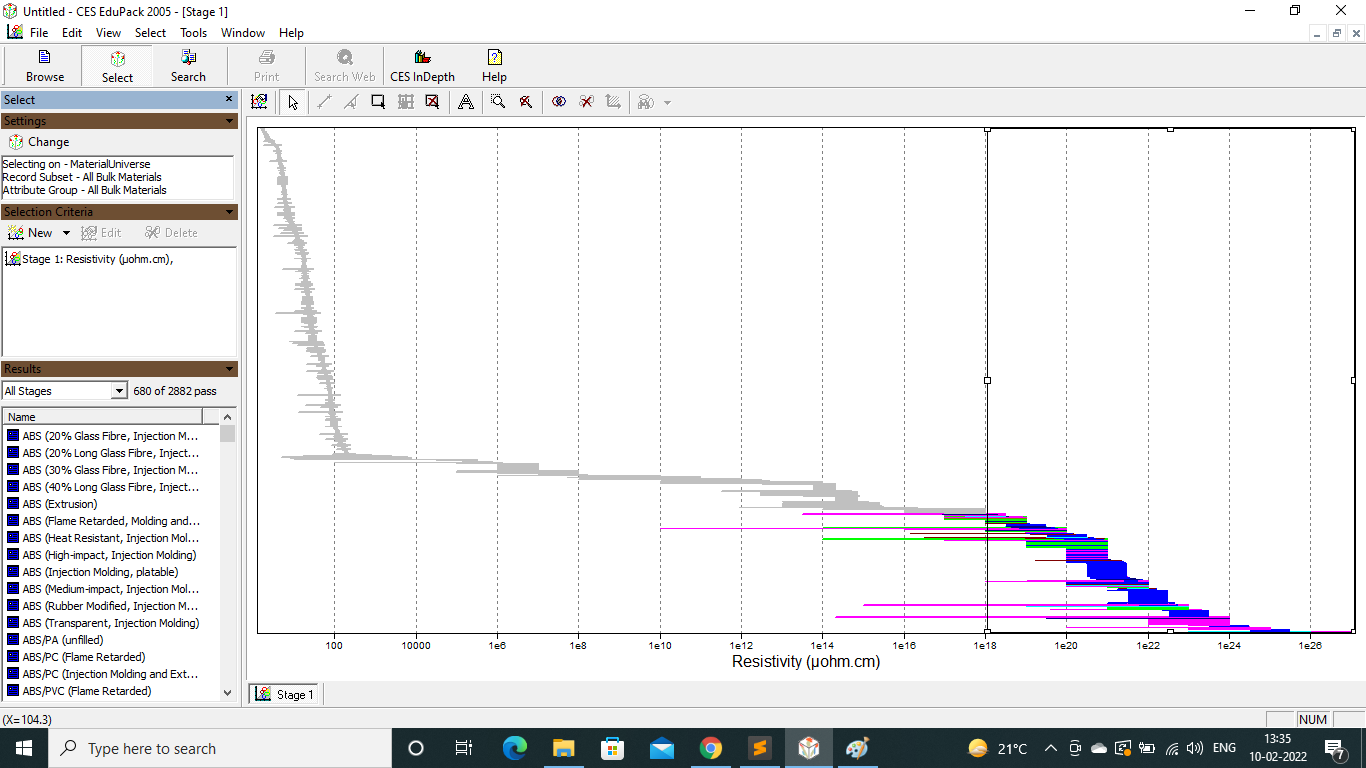
For the Stage 2, the 'Limit Stage' was chosen as the selection criteria. In this, under 'General', Density limit was used between 500 kg/m3 and 1500 kg/m3.
Since large number of parts are to be made Price will be a limit criteria too. Price limit was chosen between 0 to 180 INR/kg.
The electrical switches undergo 'on' and 'off' cycles thousands of times in their life, 'Endurance Limit' is an important criterion. The endurance limit was set from 20 MPa to 120 MPa.
Further to refine the selection process, Minimum and Maximum service temperatures were chosen. The maximum service temperature was chosen to be 140oC and minimum was chosen to be -10oC.
Applying these limits, the number of available materials were reduced from 680 to 117 in this second stage.

Now as it is the basic knowledge that polymers are more suitable for this application, I further changed the subset in material universe to polymers.This reduced the available material from 117 to 85.
But when further the results were analysed it was found that there were only TEN DISTINCT MATERIALS. Others were just different compositions of these materials.
Nine distinct materials were ABS, PE, PP, PET, PMMA, POM, PP, PS, SAN and SMA.
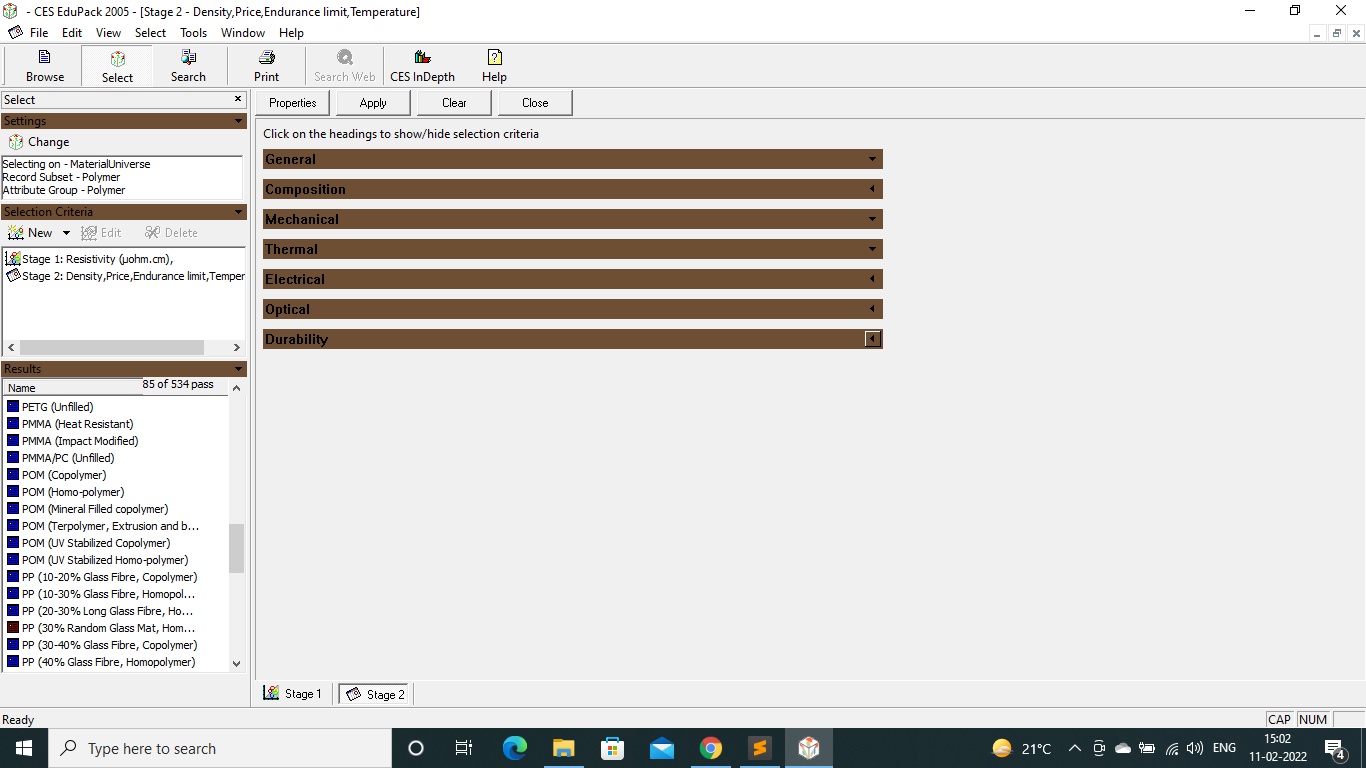
Manufacturing process used
The manufacturing process used for mass production of electrical switch body is INJECTION MOULDING
Selection of material and DFM for COFFEE MUG

When we think about the material for making coffee mug, the first category material comes to mind is Ceramics. Keeping this in mind I chose 'Ceramics' as a 'Material Universe' subset. This narrowed the total 2882 available materials to 385 ceramics materials.
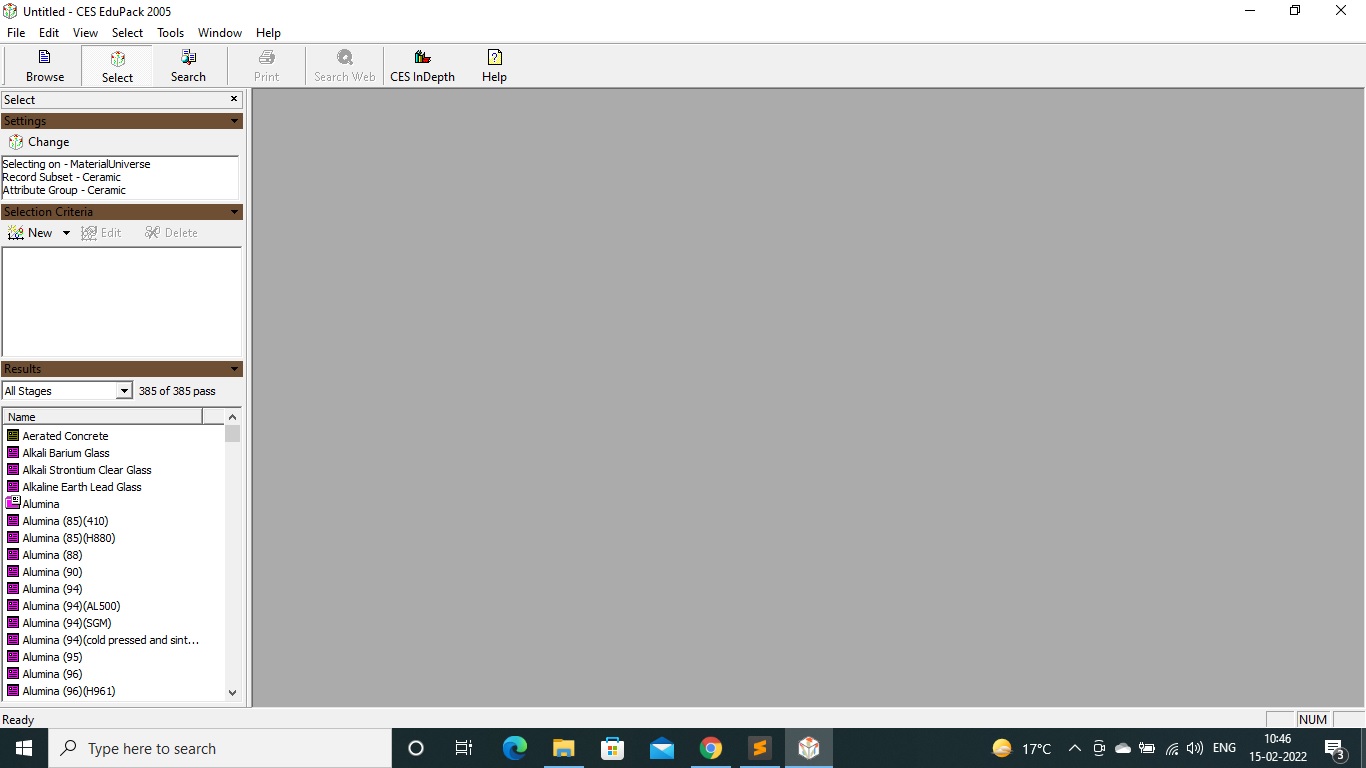
For First stage of material selection, I chose graph stage selection criterion. When we think about coffee mug material, its quite intutive that the material should have high melting point as well as high hardness. So, I chose melting point on X-axis and hardness (vickers) on Y-axis. All the ceramic materials were represented on graph. After, this a portion of graph was chosen that represented materials having high hardness and melting point. Too high values were avoided because of the cost. This filter narroed down the available choices from 385 to 36.
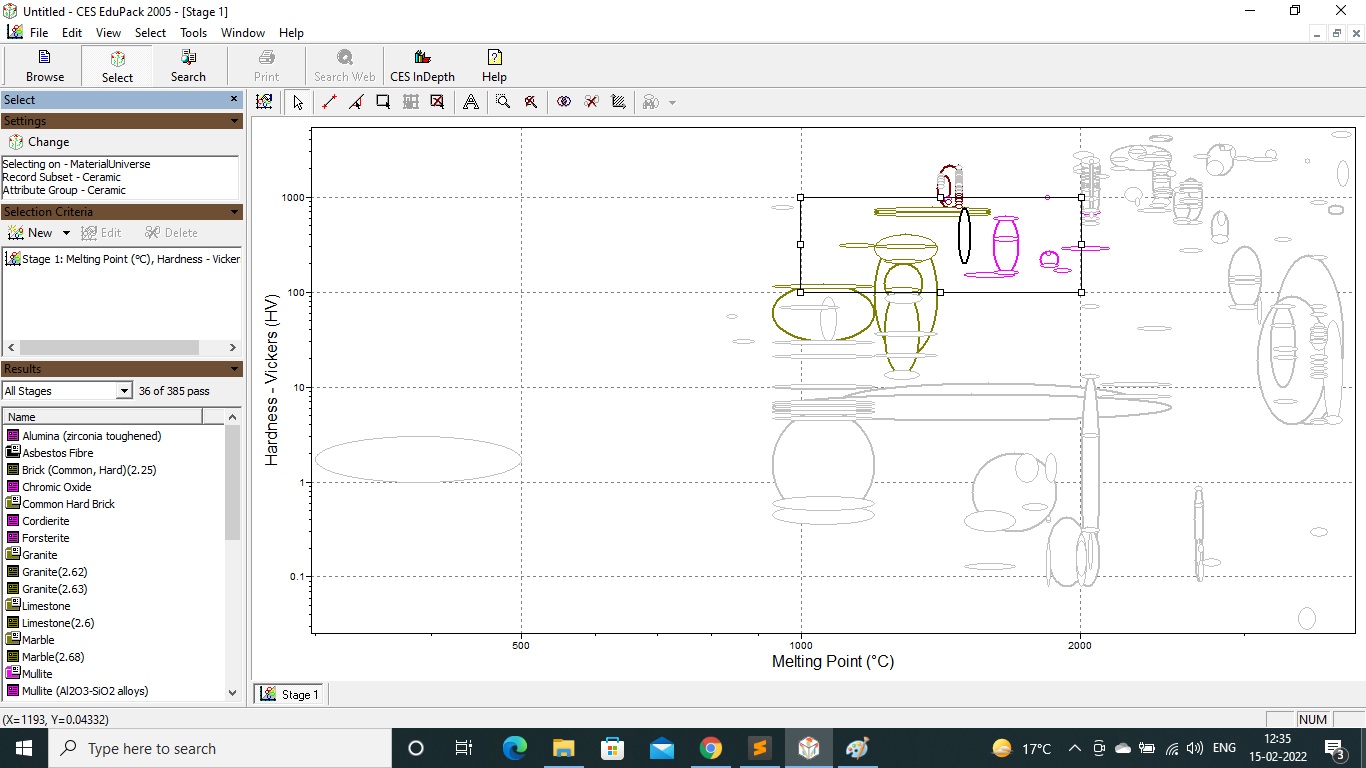
For second stage of slecetion criterion, I chose the Limit stage and and the 'Price' option in it. The limit of price was kept between 0 to 250 INR/kg. This narrowed down the result from 36 to 16 .
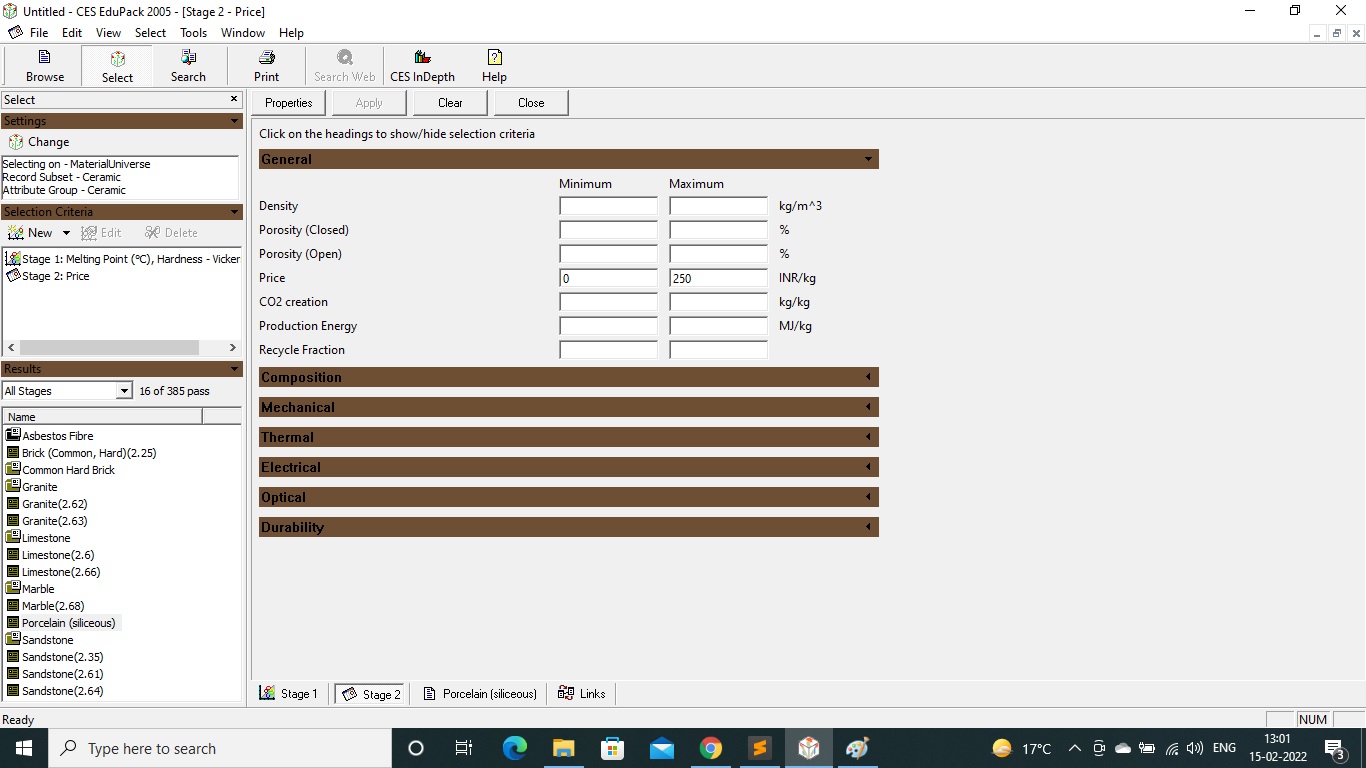
Analysing the materials left, it was found that only 7 distinct materials were available. Out of these Porcelain is the clear choice for making coffee mugs.
Manufacturing process used for mass production of Coffee Mugs
Step-01: Mixing Materials
The process begins with raw material being fed into a grinder and crushed into clay powder. The powder is then added into a mixer with quartz, feldspar, and water for 15 hours and later fed into molding tubes that turn them into clay logs.
Step-02: Form the Mug's Base
The clay logs are cut into portions, placed into a single use mold, and formed into the shape of a mug. Once the mold is dry, the mug is removed by hand to prepare for the next step.
Step-03: Add the handle
At this point, the handles have already gone through the first two steps and just need to be attached. To accomplish this, they are dipped into a mixture of clay and water known as the slip. The slip acts as an adhesive binding for the handle to adhere to the mug.
Step-04: Remove excess clay
Any excess clay is removed and any rough surfaces are smoothed down. The mug is then rinsed of any dust or debris.
Step-05: Glaze With Color
The mugs are ready to receive their color and glaze. Every coffee cup is either painted via an automated process, or painted by hand to ensure quality coating. They're then set aside to dry for at least 12 hours.
Step-06: Fire in the Kiln
Once the mugs are completely dry, they are ready to go into the kiln, which is basically a giant oven. Rows and rows of mugs are put onto a conveyor belt and ran through a kiln that's about 2,200°F.
Step-07: Print A Design
While this isn't always the case, some mugs are customized with a saying or an image.
Selection of material and DFM for COVER OF A MOBILE
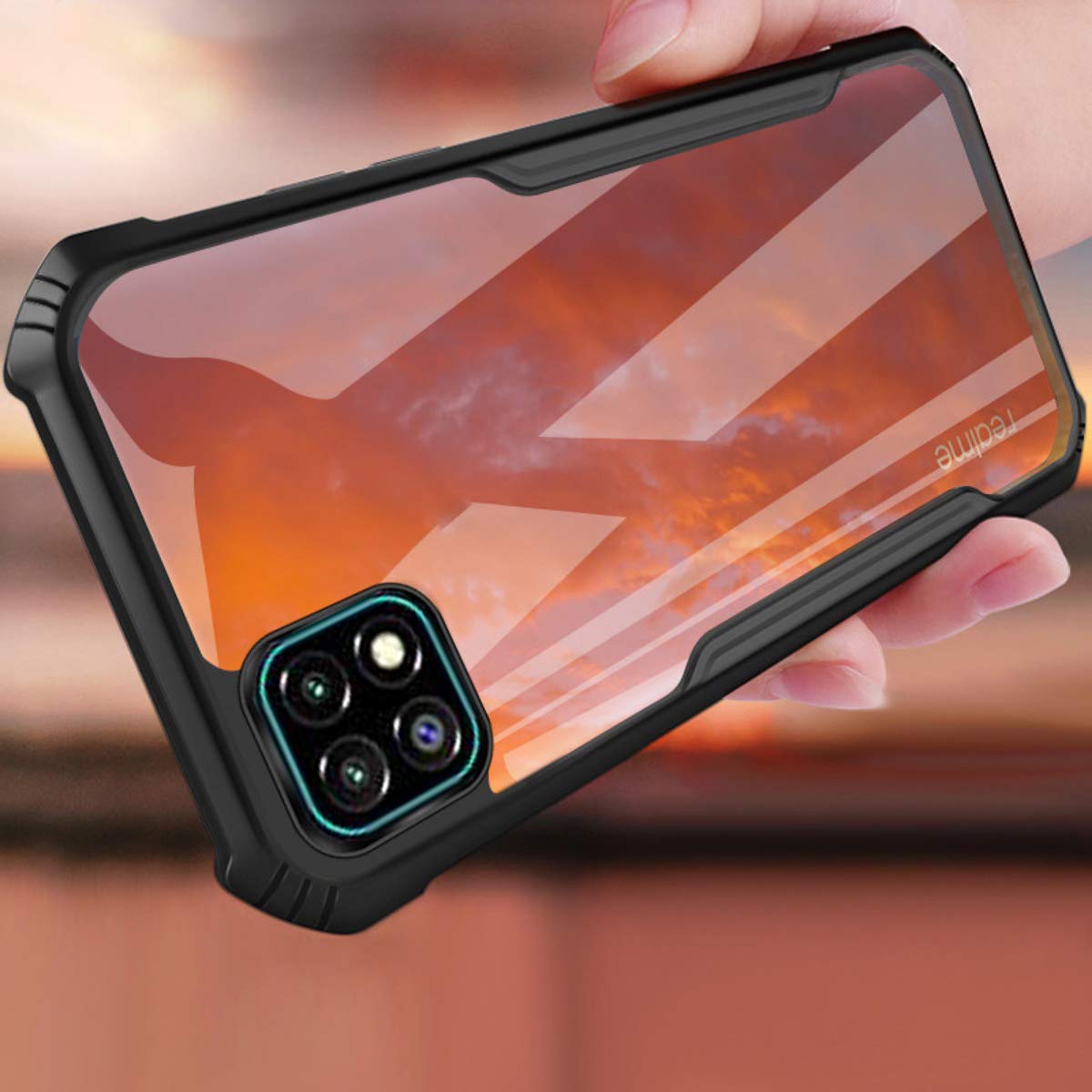
For Carrying out this material selection, Polymer category was selected as subset of Material Universe. This category has 534 available materials.
For first stage of selection, limit stage was chosen. Since the mobile back cover should be light weight and cheap, so these limits were set. Density of material was set between 600 and 1200. The Price was set between 50 and 350 INR/kg. Now under 'Composition'category,various categories of polymers were chosen. This reduced the available materials from 534 to 133.
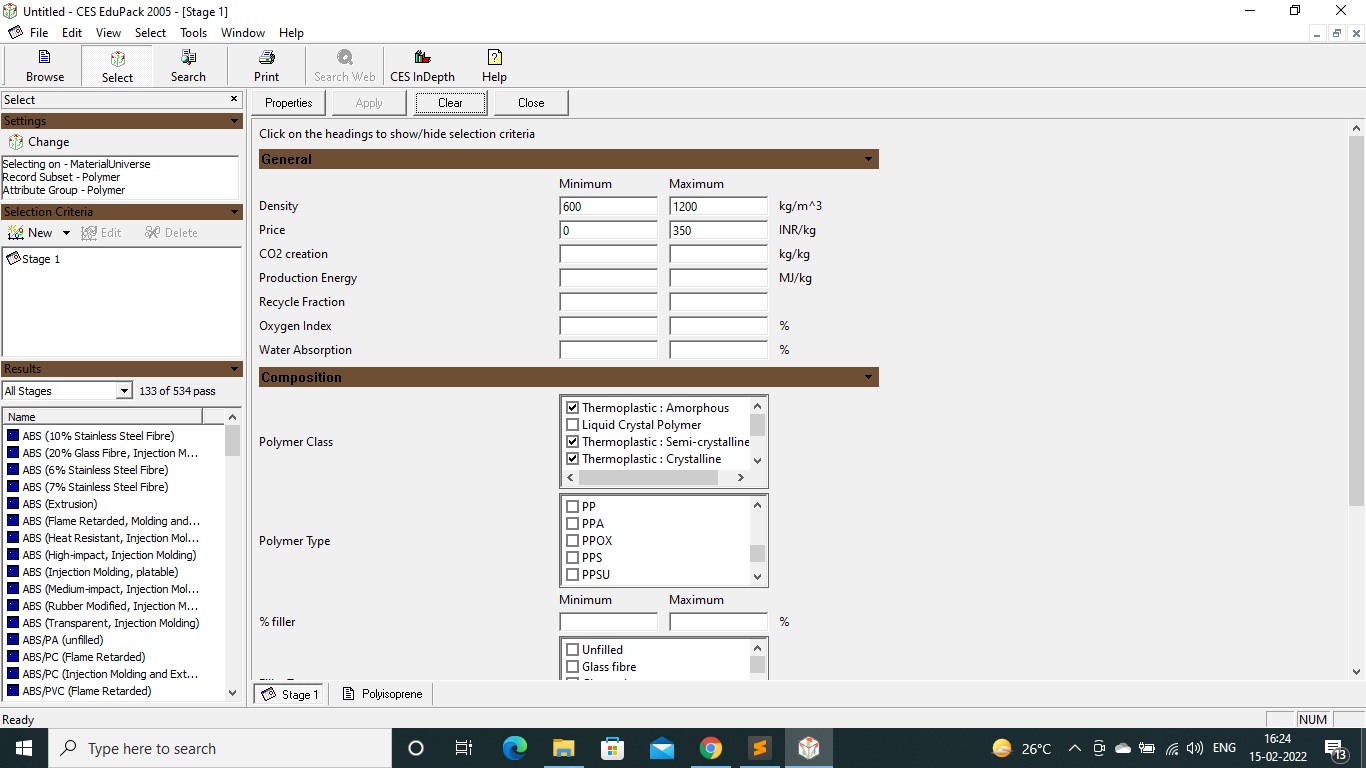
Further for second stage of selection, I chose graph stage and and selected 'Durability' as the criterion. In the attribute selection, I chose 'Wear' as the criterion. This shows all the 5 categories of wear in which all the polymers lie. Since the material used for mobile cover should have quite good wear resistance, I chose 'Average' and 'Good' wear resistant properties. This selection reduced the number of available materials from 133 to 114.
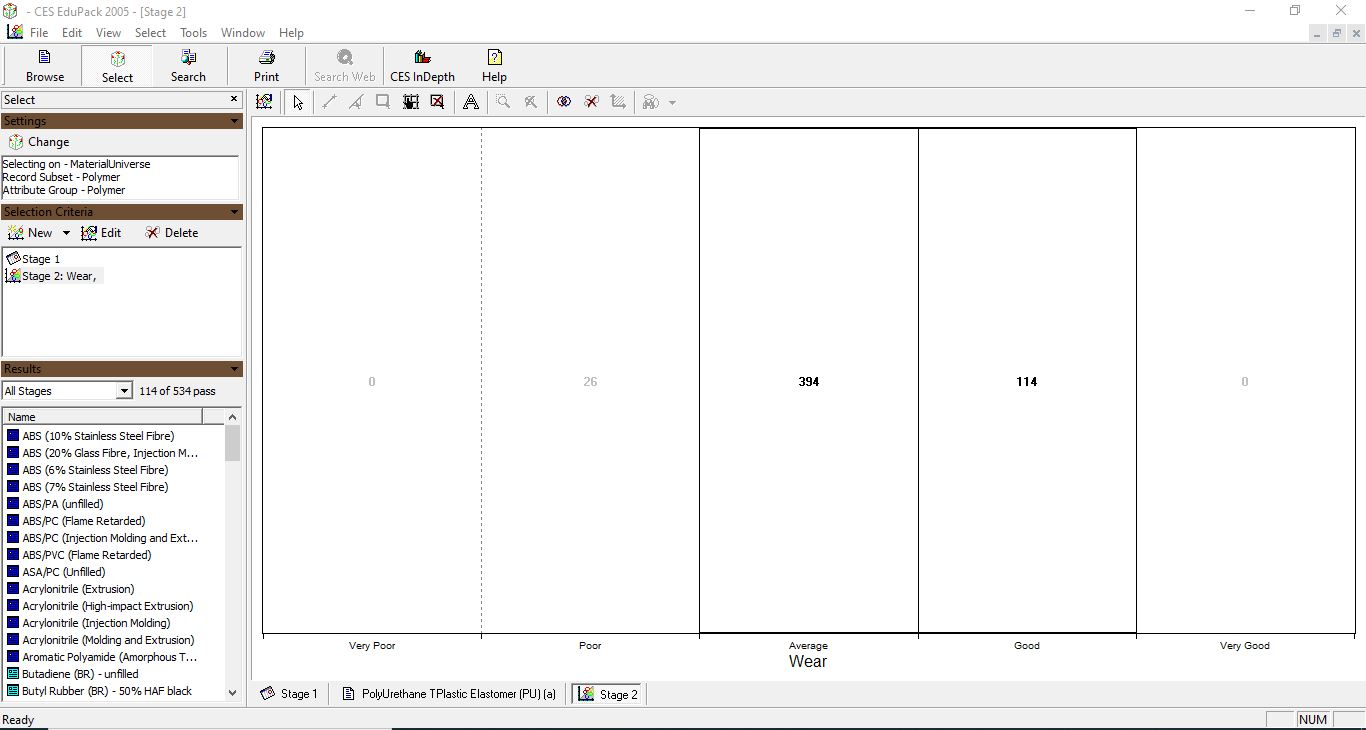
Further, like second stage, for the third stage, I chose the graph stage and under thermal properties category, I chose 'Thermal Expansion' as the attribute. Now the thermal expansion of the material should not be very high, I chose the middle portion. This reduced the availability of materials from 114 to 87.
For fourth stage, I chose graph stage and in attributes, Flexural modulus and Elastic limit were chosen on the x and y axis respectively. Now middle range of the propeties were chosen, as too much high range will unnecessarily increased the cost of the material. This reduced the available materials to 40. As I analysed the materials, it was found that only 8 different materials exist as our choice, rest are just combinations. These materials are ABS, EVA, PA, PE, PC,PMMA,PP,TPU.
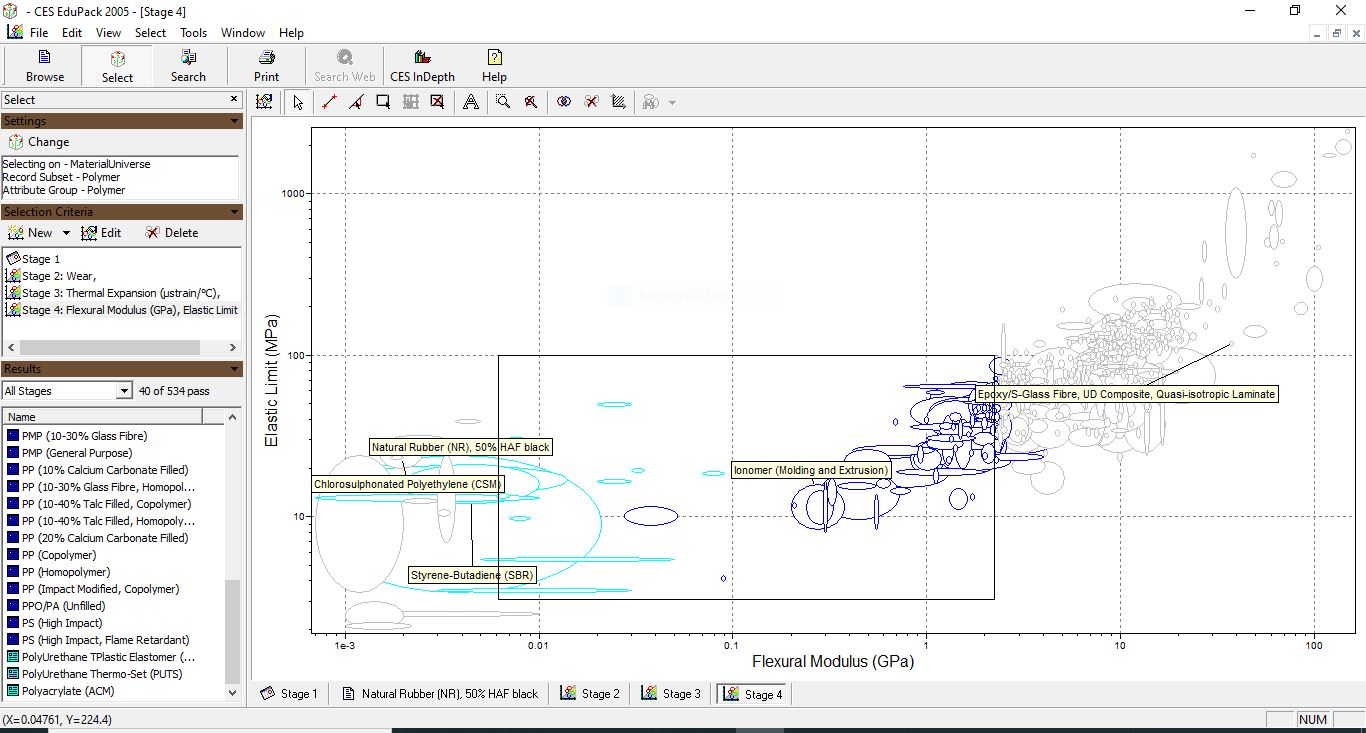
Manufacturing process used for mass production of Mobile Cover
Step-01: Producing Base using Injection Molding
Mobile Covers are carefully designed and facilitated by a molding process. The injection molding process utilizes a ram or screw-type plunger to force molten polymeric material into a mold cavity found in the mold base.This solidifies the shape of the cell phone case that is formed to the contour of the mold. This is done by a high-pressure injection of the plastic into the mold which shapes the polymer into that designed shape.
Step-02: Shaping through CNC machine
From the base, a cover maker uses a CNC machine to slowly and carefully shape the cover into the appropriate design.It transforms stock pieces of material, such as a block of plastic, and will arrive at a finished product which is the phone case. CNC relies on digital instructions and it interprets the design as directives for cutting prototype parts.
Step-03: Smoothening and Polishing
The edges are rounded and the mobile cover is polished using different techniques to create shiny appearance
Step-04: Printing
Print the backside of the case using water print or Screen print or IMD (In-Mould decoration) or Laser carve
-------------------------------------------------------------------------------------------------------------THE END-----------------------------------------------------------------------------------------------------












